-
Posts
2,569 -
Joined
-
Last visited
Content Type
Profiles
Forums
Gallery
Events
Articles
Posts posted by alexbq2
-
-
Additionally 2 kopeck 1840 SPM
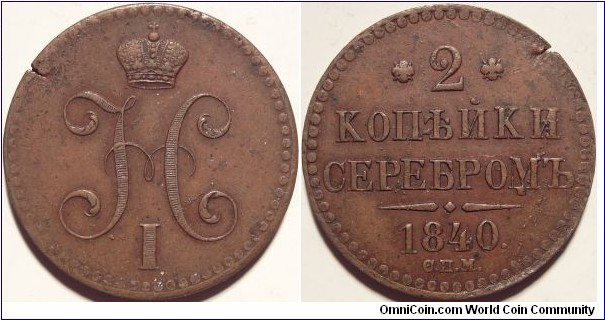
And a 1840 Proof SPB pattern
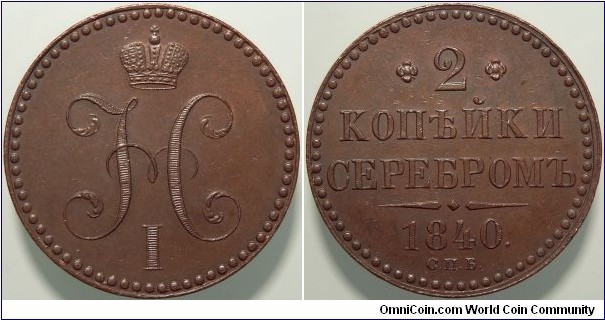
-
1840 2 Kopeck EM types
Original EM 1840 1 year type - decorated cypher and large EM on the reverse
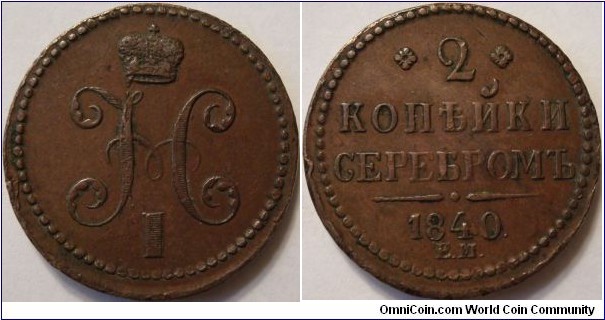
Subsequent type with plain cypher and smaller EM on the reverse
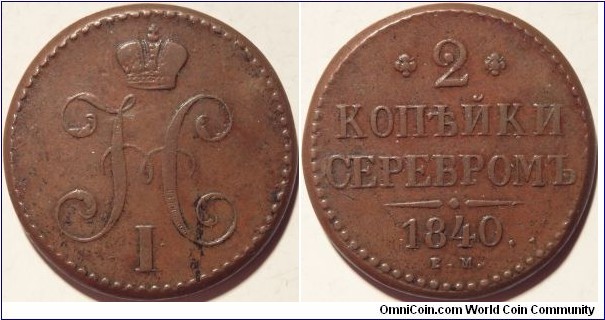
Mule type 1 with decorated cypher and small EM
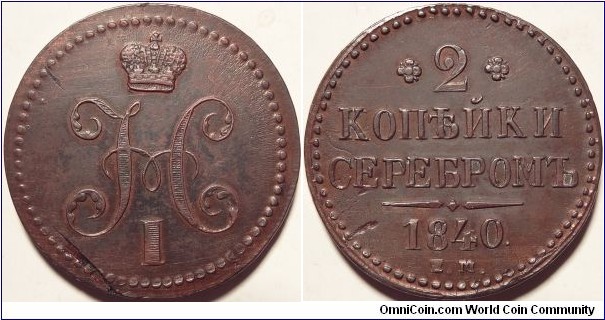
Mule type 2 with plain cypher and large EM on the obverse:
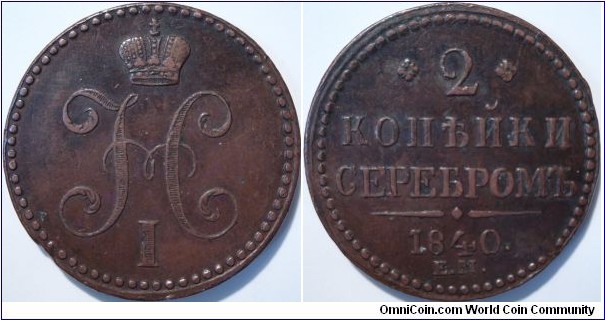
-
Full set of 1840-1843 1/2 Kopeck SPM
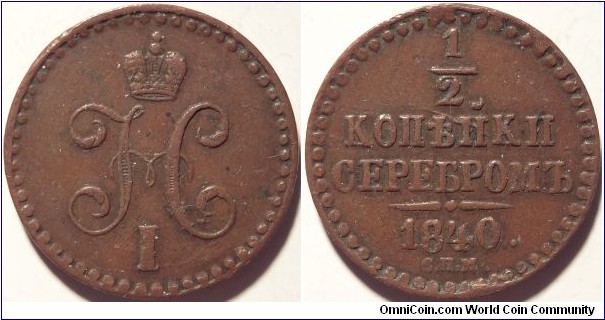
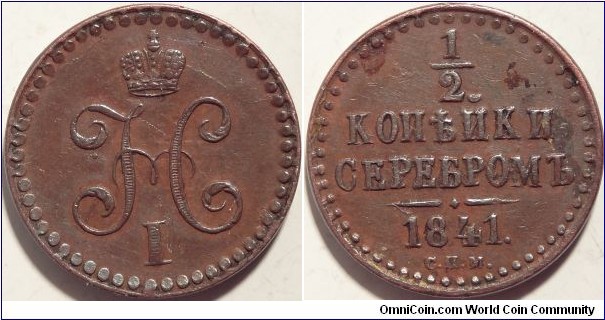
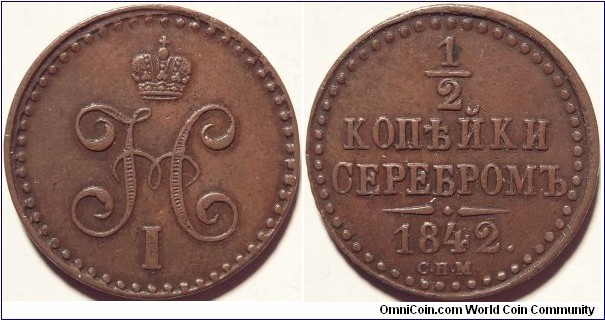
-
Additionally 1848 1/2 kopeck MW
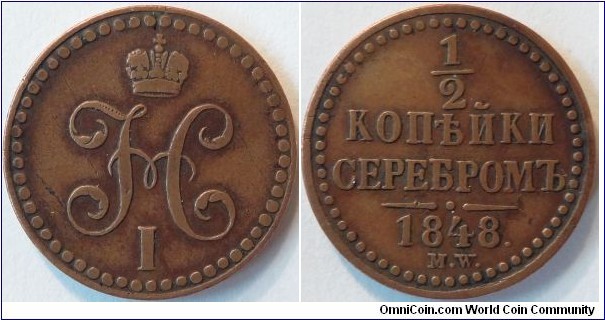
-
Full set of 1839-1847 1/2 Kopeck CM:
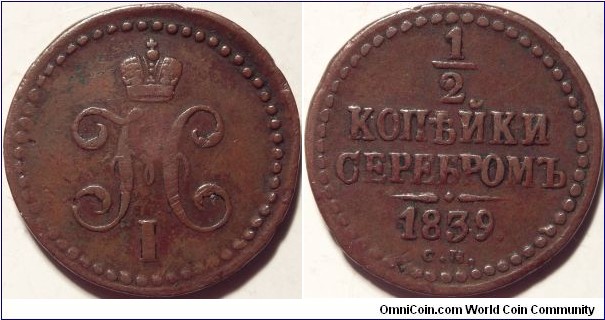
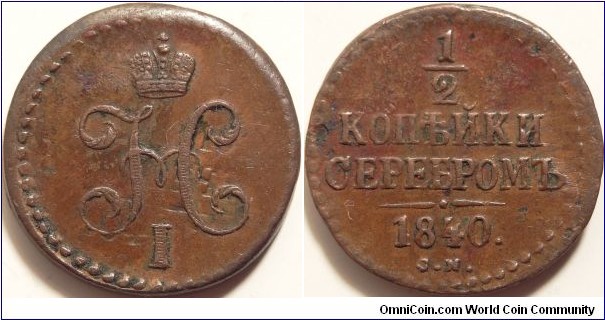
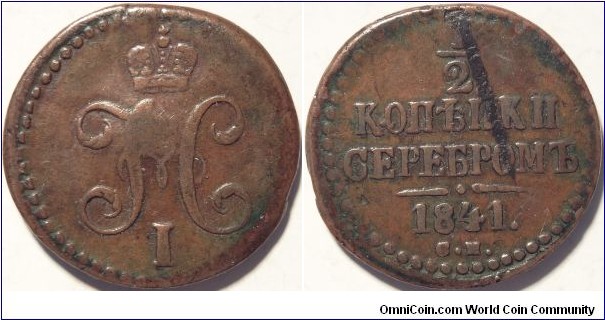
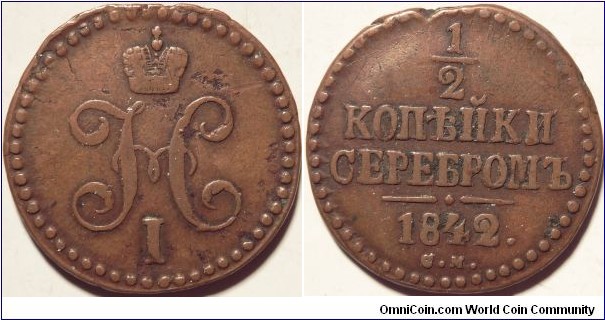
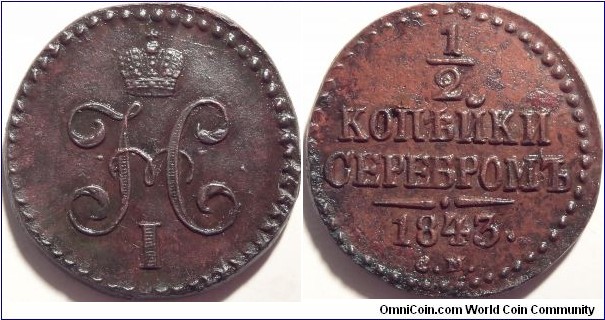
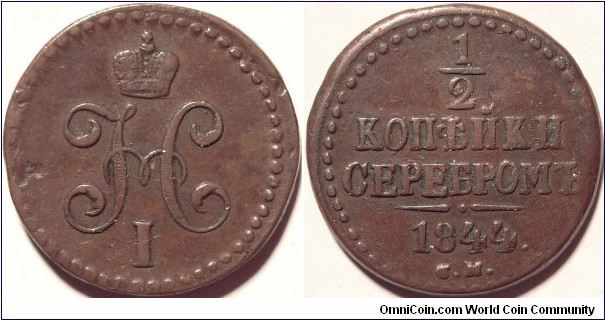
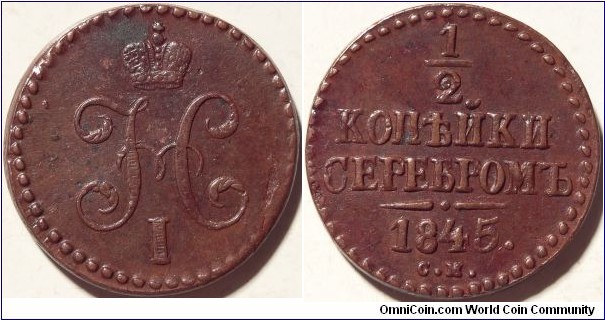
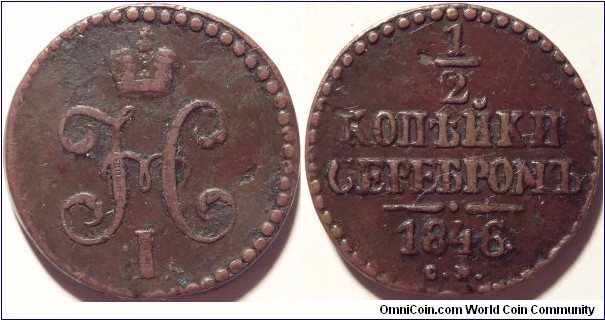
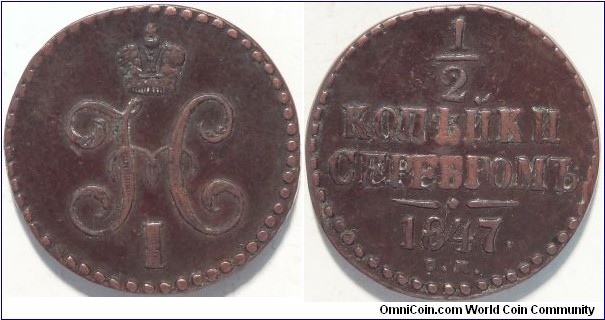
-
In addition here's a smaller set of 1840-1843 SPM 3 Kopecks:
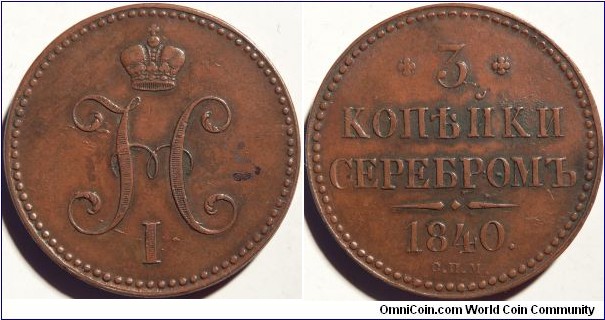
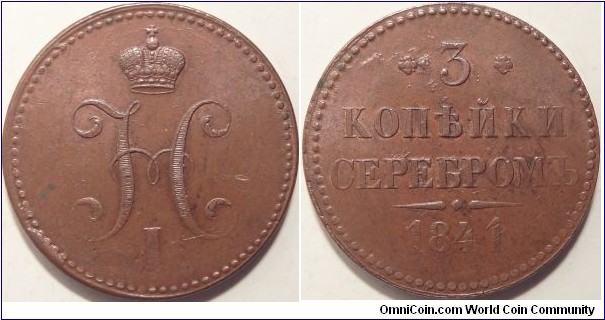
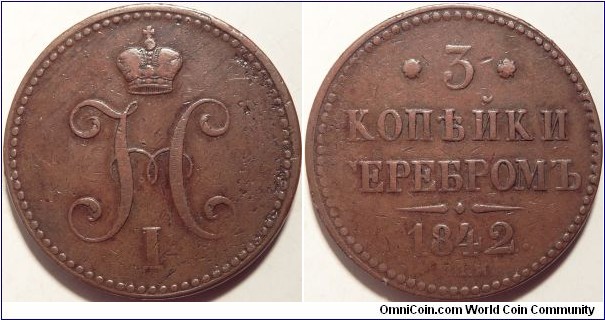
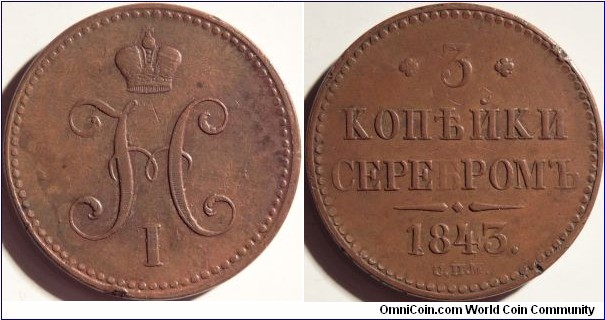
-
Full set of CM 3 kopeck coins 1839-1647
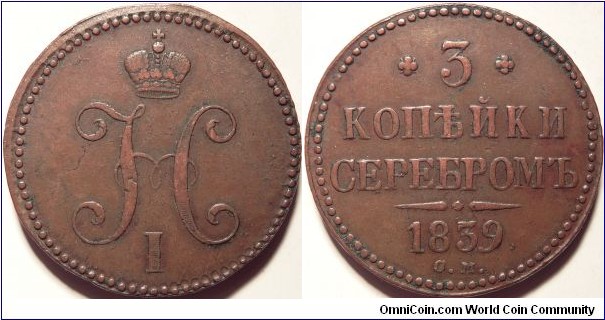
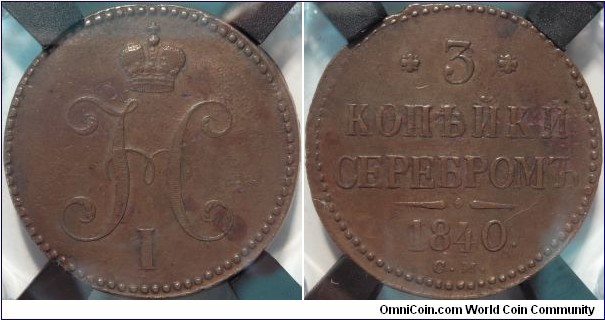
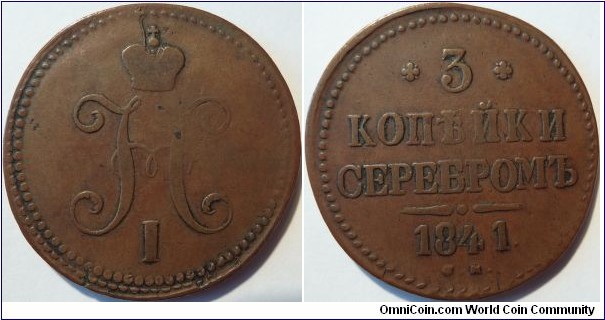
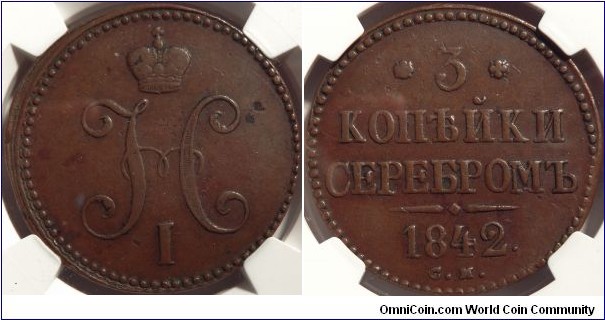
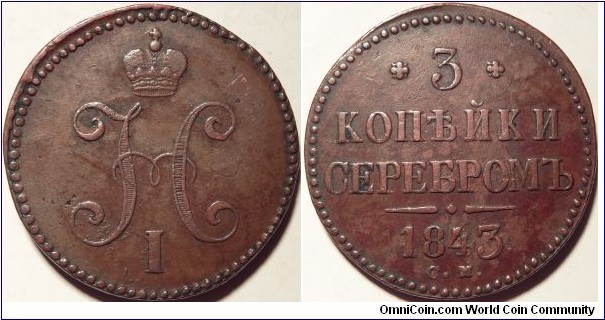
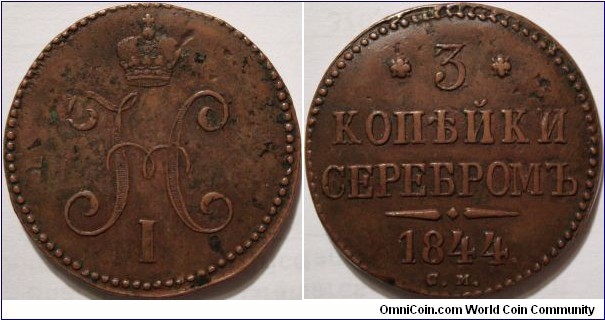
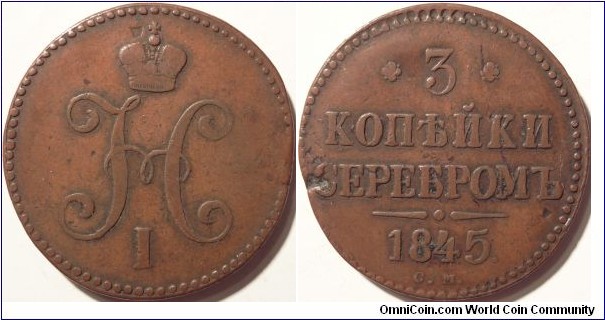
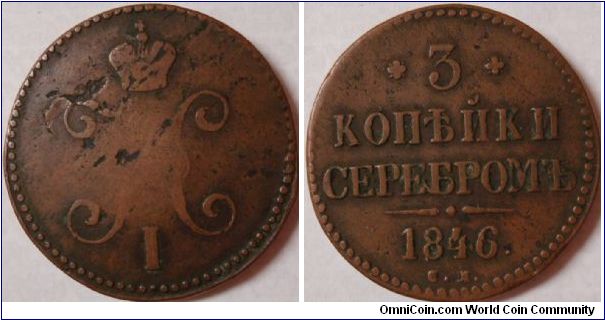
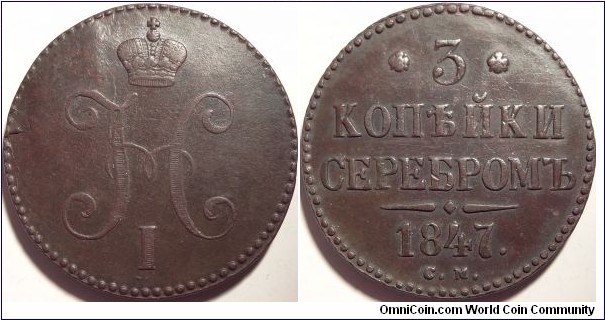
-
Finally completed my set of the cypher 1839 CM series:
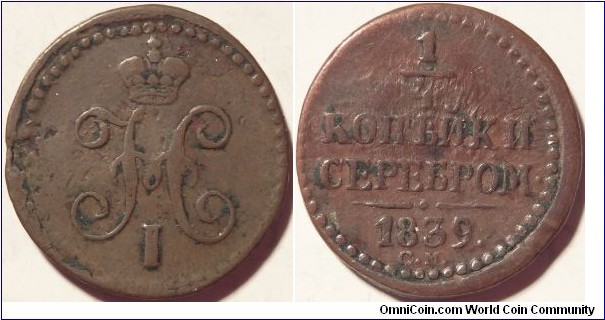

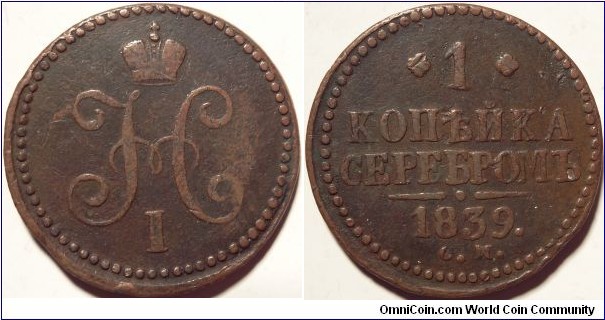
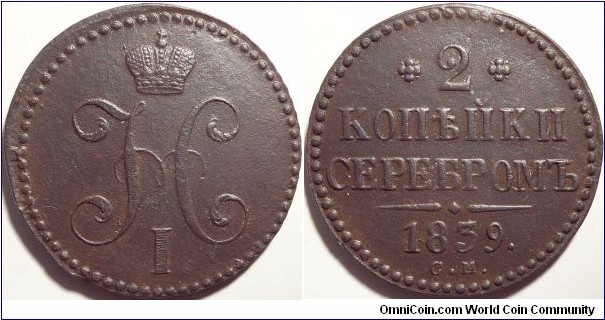

-
Completed my set of Warsaw Mint (BM) coppers:
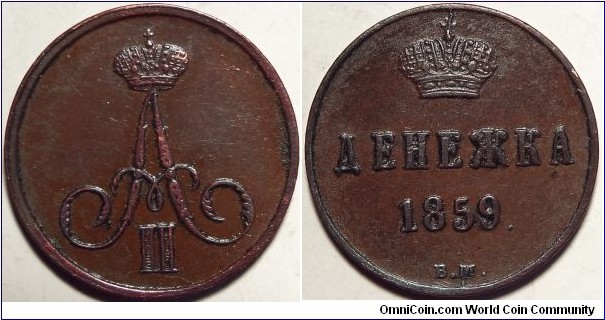
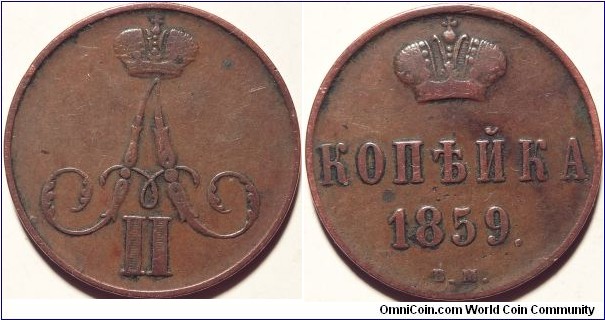
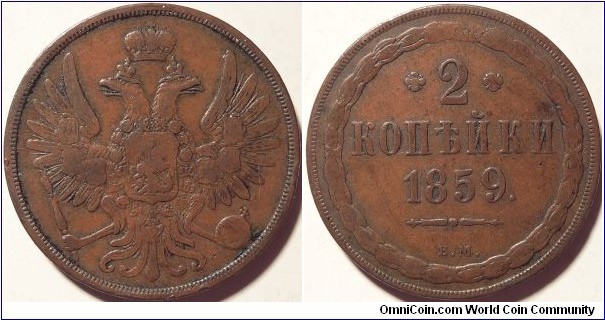
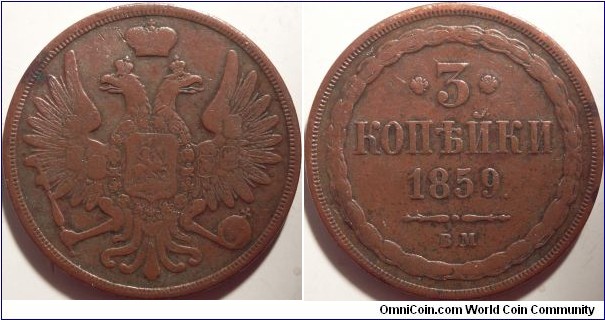
-
I have a couple of silver 1755 5 kopeck coins, and some time ago I noticed that the decorative elements on my 2 coins were different. I looked at the images on M-DV and noticed that there was quite a variation in these decorations. Here's my attempt to sort them out by types of decorative elements as well as to count them up based on the images available on M-DV.
-
On 5/19/2022 at 7:44 AM, gxseries said:
This set took me close to a decade to complete. It's because I wasn't prepared to pay top dollars and am happy to wait for one at a reasonable price.
Struck with the same planchets used for the Soviet coins - these were struck at Leningrad Mint
http://gxseries.com/numis/rus_new_type/tannu_tuva_r.jpg
Looks quite neat as a set. I thought I would complete the 1946 Spitsbergen set first before this.
Link:
http://gxseries.com/numis/rus_new_type/tannu_tuva.htm
Well done!
-
There's fake everything in Russian numismatics. To your point these could be contemporary counterfeits as well. They look gold plated to me.
-
Something was recently pointed out to me with respect to the types of 15 kopecks from 1860 that I would like to share here.
Let's start with the so called large eagle which is the first issue of 1860 and was redesigned later that year.
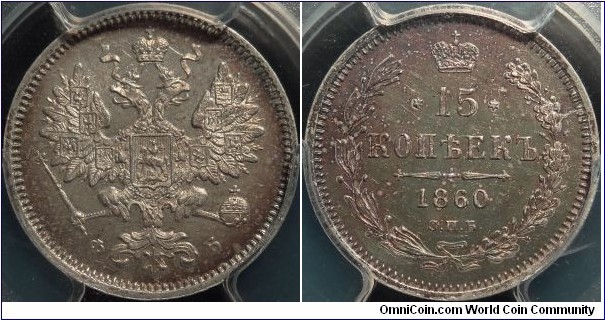
The redesigned coin has pretty much the same reverse but features a different, smaller eagle, on the reverse:
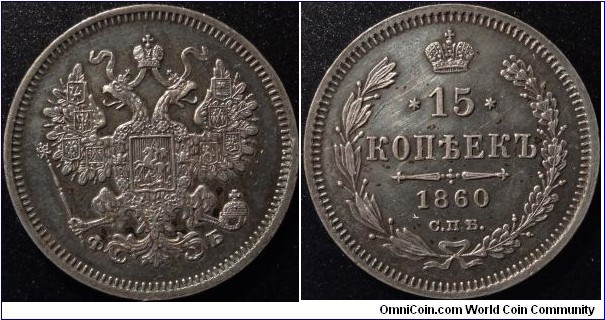
This second coin design lasted more or less unchanged until 1917. There is one notable difference in that 1861 and onward coins feature a larger mint mark on the reverse:
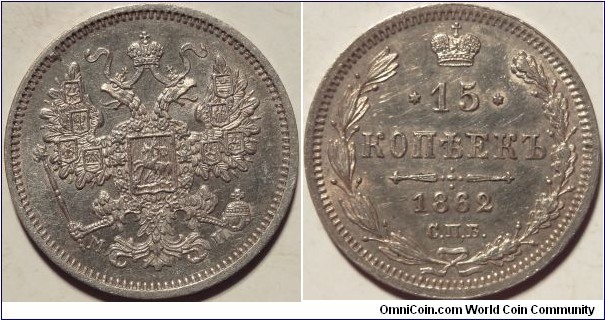
As it turns out, there is a variant in 1860 that also features the updated larger mint mark:
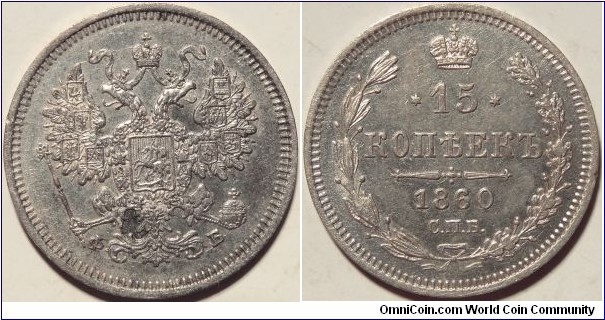
It does appear that most of the 1860 mintage was the Large Eagle issue, with the redesigned eagle coming in the later part of 1860. Obviously the redesigned reverse came very late in that year and the 1860 large mint mark does seem to be fairly scarce.
I am curious if there is a 10 kopeck coin from 1860 with the larger SPB mint mark?
-
Polushka
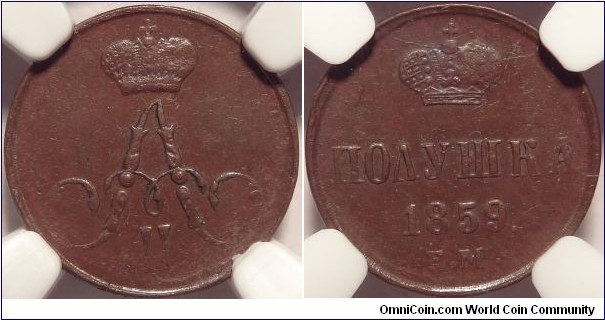
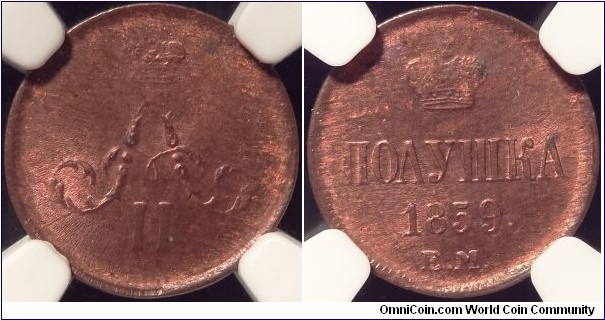
Denezhka
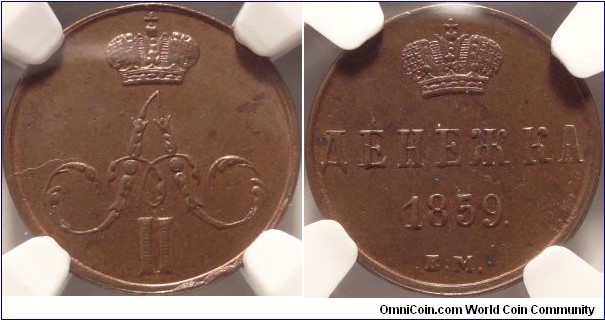
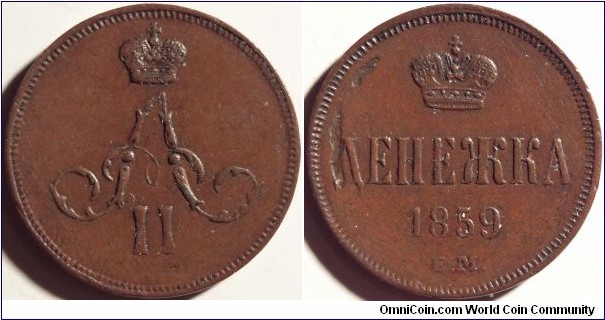
Kopeck
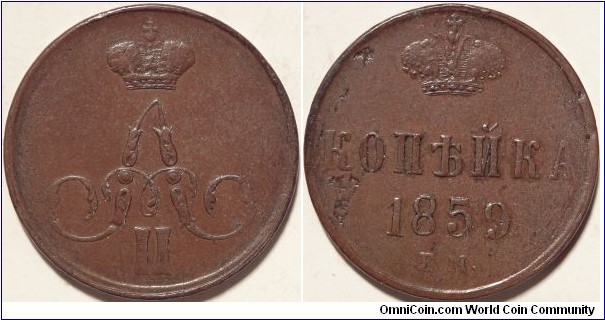
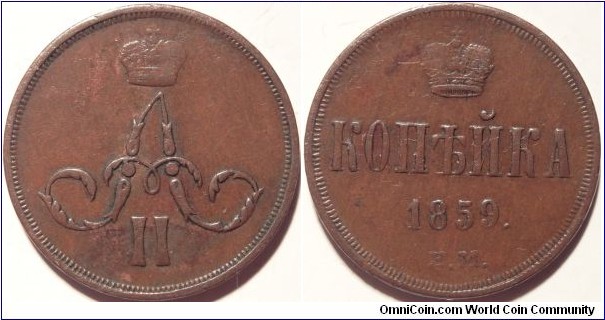
2 Kopecks
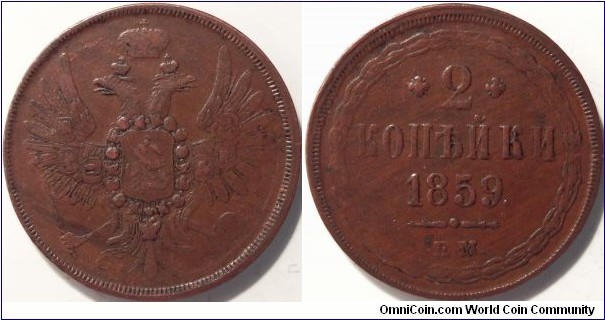
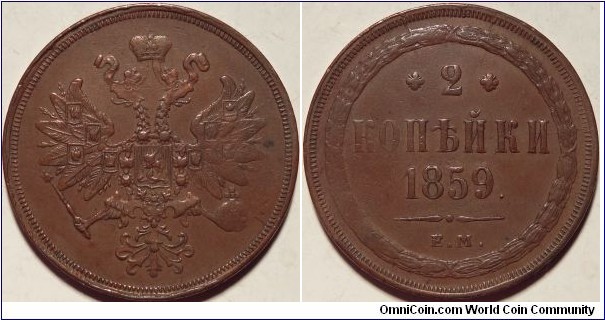
3 Kopecks
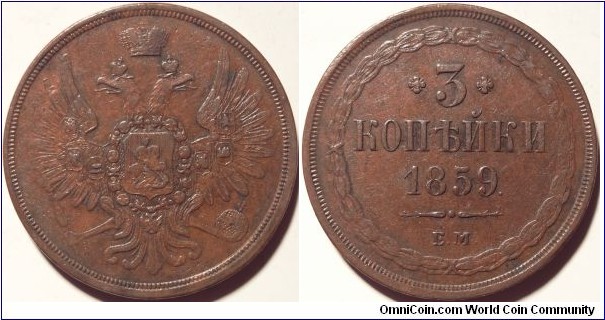
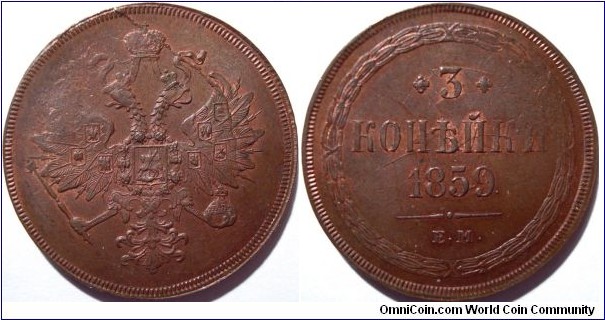
5 Kopecks
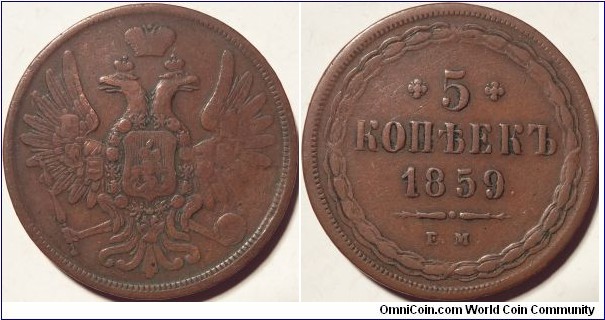
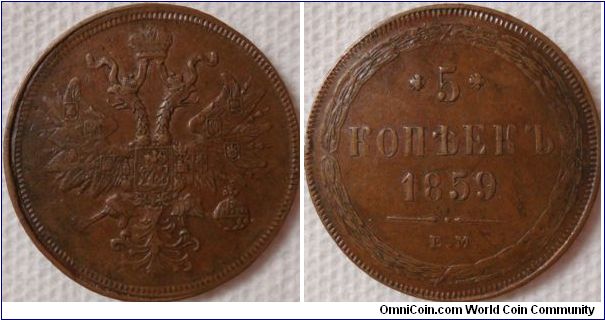
-
On 1/24/2022 at 11:20 AM, ViFi said:
Hi
Perfect! 150 $ is too much for the fake. Genuine price idea is between 1000 to 4000 $ depending on condition.
I wouldn't want to own a fake, but I have noticed that for these replicas/fakes of the coins that are not really accessible to an average collector in this case a Novodel maybe costs 1K-4K if you find one, but genuine is more like 10K+) there is a market, and some people are buying them for around $100.
-
Hi Paul,
I don't believe that this is an authentic Novodel. Take a look at this one and you can see the difference:

-
1 hour ago, sigistenz said:
Very interesting, Alex!
 I had hunted down the 3 eagle variants which was pretty tough but never had known about mules.
I had hunted down the 3 eagle variants which was pretty tough but never had known about mules.
Sigi
Glad you liked my post Sigi! I didn't think these coins were heavy enough to catch your interest. 🙃
-
As a variety collector I'm always interested in the years of issue when the coin design was changed in some way. 1860 is definitely one of those interesting years for silver denominations. I was recently lucky enough to complete my set of the 1860 20 kopeck variants that I would like to present here.
1860 starts off continuing the production of the 1859 style coins. In 1859 all denominations of coins in all metals were updated with the new style of eagle, often called the "thin eagle" among the collectors. The 20 kopeck coin presented below, featuring the "thin eagle" was struck on a 86.8% silver planchet weighing 4.14 grams.
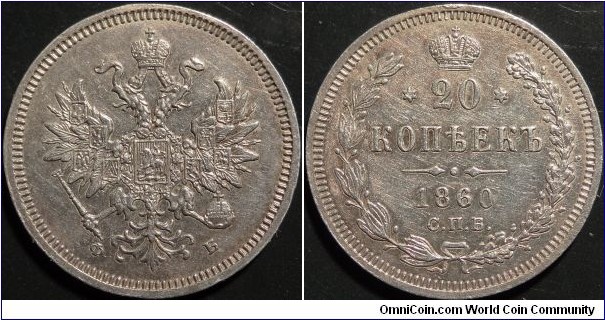
However in 1860 the silver content in the smaller denominations (5, 10, 20 kopecks) was reduced. The new coins were made of 75% silver and the 20 kopeck weighed 4.08 grams, effectively reducing the total silver content in the 20 kopeck coin from 3.6 grams to 3.06 grams. Perhaps to reflect this change and to distinguish between the coins with higher silver content and the new coins the design was changed.
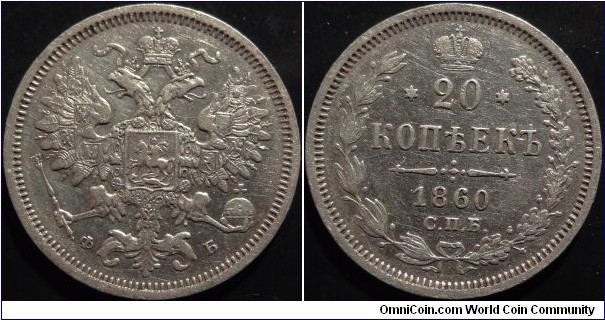
As you can see the obverse was completely redesigned and at least 1 small but noticeable change was made to the reverse - namely the lie separating the denomination and the date was made larger and was added additional decorative elements. This design was short lived and was altered later that same year.
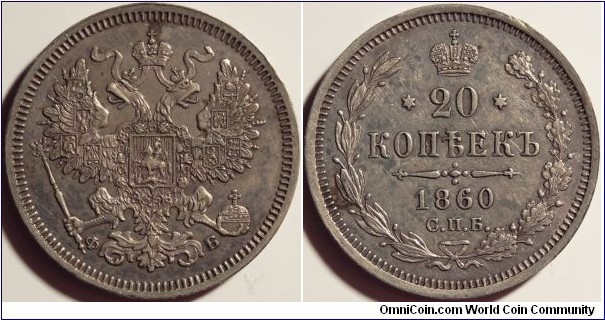
This new design was adopted to all small silver denominations and stayed mostly unchanged for the rest of the Russian imperial period, up to 1917. The new obverse features an eagle that is slightly smaller but most noticeably has a wider tail, as such it is often refereed to as the "Wide Tail" variety, and the previous variety is the "Narrow Tail". The reverse features numerous smaller updates of which the most prominent is the new design of the ribbon tying the wreaths/branches. The new is more triangular with wider spread bottom ribbons.
In the 1860 a lot of 20 kopeck coins were struck. The official mint numbers don't reflect this, but the numbers we have are for the fiscal year and not the calendar year so do not reflect the actual number of coins dated 1860 minted. However the market holds many 1860 20 kopeck. Most common are the later variety - the "Wide Tail". Perhaps due to the high production quantities being minted the mint kept using the "Wide Tail" and the "Narrow Tail" dies simultaneously. We know this because there are 2 mule combinations of these dies.
The Mules (coins with mixed obverse/reverse) are rare. It is hard to gauge precisely how rare because most auctions and auction trackers don't seem able/interested in correctly identifying these variants. The coin below may be slightly more accessible:
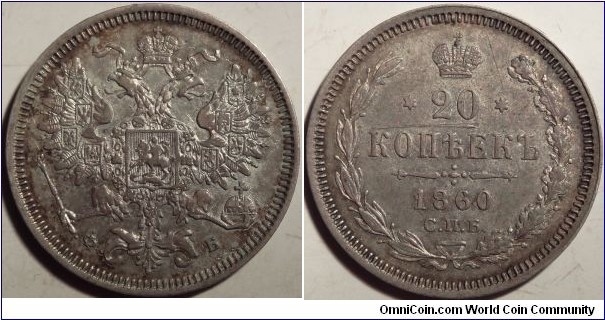
This is a mule featuring the "Narrow Tail" obverse and the flat triangular ribbon reverse. These variants have been known for a long time, the above is Bitkin 168. The popular m-dv.ru auction aggregator lists this variety and currently shows 22 auction results (the earliest listing from 1997!) for this variety, unfortunately if one looks at the provided images there are only 3 distinct coins of this variety among the 22 listed results. Most coins show in that category are either the Narrow or Wide Tail variants and not the Bitkin 168 mule.
The second mule is my recent acquisition that completes the 1860 20 kopeck set.
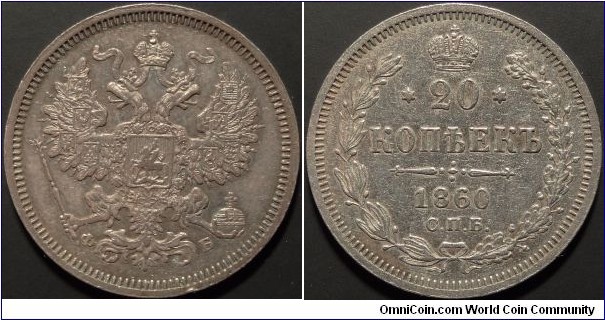
This coin is the opposite Mule, featuring the newer Wide Tail obverse combined with the earlier reverse with the taller ribbon. This appears to be the rarest of these variants and is listed in Bitkin as 170. Interestingly m-dv.ru list only a single coin in this category that was originally offered in 2013 by Sincona and is likely part of the Soderman collection. I looked through all of the other available images of the 1860 20 kopecks on the m-dv.ru, and was not able to find any additional examples of this or the other Mule variant among the 213 auction records.
-
Adam,
Thank you for your interest in this subject. The coin you are showing above, and the coin that I own are not the same variant. If you read the information that I posted above you will see that my coin has the tip of a 3rd banner poking out from the lower of the draped flags, while the coin you are showing, the one from this auction, does not:
https://onebid.pl/pl/monety-rosja-elzbieta-4-kopiejki-1761-nowodiel-ngc-ms63-bn/433370
I looked around on M-DV and the above coin does stand a little apart in some minor details. It also appears to have a rope edge, which is unexpected... But it does indeed seem to be the same coin that was owned by Virgil Brand and later by Willie Fuchs.
https://www.m-dv.ru/catalog/p,175886/image.html
https://www.m-dv.ru/catalog/p,38372/image.html
If I understood you correctly you are saying that this is an old cast or a galvano copy? Meaning that you think that the coin with such provenance was actually a fake the entire time and neither Fuchs nor Brand nor any other collector or dealer who had a chance to examine the coin over these many years could not tell the difference? Forgive me but I am inclined to disregard such assertions....
-
-
Hello Coinbyur,
Thank you for your post. Just a couple of notes. Most Novodels of the Imperial Russian coins should at this point be over 100 years old. There is/was a dishonest tendency to equivocate or extend the term Novodel with privately minted forgeries or souvenir replicas that were and are produced since the late 20th century. The official minting of Novodels by the imperial mints was more or less ended in 1890 due to the lobbying by Grand Duke Georgii Michailovich. Some Novodels were minted later for use in industrial exhibitions and in the 1920s buy the new Soviet government for sale abroad. But the practice of the mints accepting private orders from collectors/dealers ended in 1890 AFAIK.
Many collectors express the same opinion as you preferring not to collect Novodels, but due to their scarcity and normally great condition and superior quality of the strike = great eye appeal, Novodels continue to bring in very high prices at auctions.
I for one view the original Novodels in the same line as the contemporary mint sets, they aren't meant for circulation although resemble real coins, and are made to satisfy the collectors market. That's just my opinion.
-
Unrelated to the question of authenticity, but in what universe does this coin deserve an AU55 grade?
-
That one looks alright to me. Although, I do not routinely buy roubles. The hole is unfortunate but it has a better overall appearance that mine.
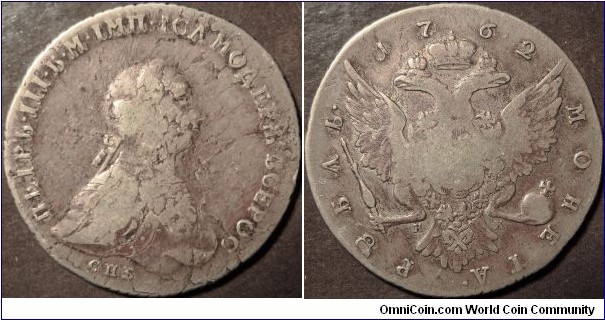
-
1778 5K looks alright to me. 1770 10K is a bit rough, I'm not sure about it.




NIcholas 1 - 2 kopecks 1850-1855
in Russian Virtual Coin Museum
Posted
EM 2 kopecks 1850-1855